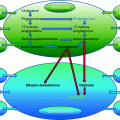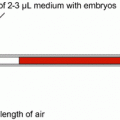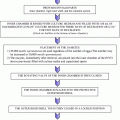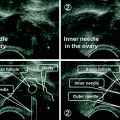© Springer International Publishing AG 2017
Ri-Cheng Chian, Geeta Nargund and Jack Y. J. Huang (eds.)Development of In Vitro Maturation for Human Oocytes10.1007/978-3-319-53454-1_1818. Mild Stimulation Protocols for Oncofertility Patients
(1)
Department of Reproductive Medicine, Royal Hospital for Women, School of Women’s & Children’s Health, Level 1, Barker Street, Randwick, NSW, 2032, Australia
Keywords
CancerChemotherapyDeathRadiotherapySurgeryIntroduction
Oncofertility is an interdisciplinary field which considers the consequences of gonadotoxicity associated with cancer therapies and tries to facilitate fertility preservation when possible. The effects of cancer on fertility can be severe and vary depending on the age of the patient, the type of cancer and the type of chemotherapy or radiotherapy, or surgical treatment used [3]. The oncology clinic must provide patients with sufficient relevant information regarding fertility preservation to aid them in decision-making concerning possible approaches for fertility preservation before cancer treatment. Fertility is one of the aspects of quality of life that men and women find most important in the years after successful treatment of their cancer [4].
This paper covers the practical aspects of cryopreservation of gametes or embryos for cancer patients prior to the treatment. We will cover the process from point of diagnosis, initial consultation with the fertility team, procedure involved, post-fertility team management and long-term follow-up.
Diagnosis
From the point of diagnosis of cancer, it is important for the oncologist to discuss not only the treatment plan for cancer, but also the options of fertility preservation. Patients with cancer may have reduced fertility as a result of their condition. The oncologist will need to state the potential impact of treatment on fertility, the time frame the patient has prior to the start of the treatment, and the safety of fertility preservation based on the type of cancer and its treatment. This ensures that patients are given sufficient information at an early stage, along with the necessary referral to a specialist in oncofertility. Oncologists are understandably preoccupied with delivery of treatment for a potentially life-threatening condition and may not have future fertility problems on their list of important topics to discuss. However, given the importance that many patients ascribe to fertility, this should be addressed by the oncologist. Fertility clinics can assist by providing up-to-date information and contact details.
Initial Consultation
This will be the first consult with the fertility team. This consult gives an opportunity for the fertility team to assess the risk of damage to gonadal function posed by the proposed therapy, the patient’s desire for fertility preservation and their social situation, the patient’s overall medical condition and the time available prior to the start of cancer therapy. Not all patients will be concerned about loss of fertility. Many may have completed their families and others may be due to receive treatment with low gonadotoxicity, rendering fertility preservation unnecessary. Some may already be too unwell to tolerate the procedures involved or have to receive chemotherapy with such urgency as to make fertility preservation impossible [5].
Strategies for fertility preservation will be discussed in the context of their specific circumstances. These include oocyte cryopreservation, embryo cryopreservation or ovarian tissue freezing for women and sperm cryopreservation or testicular tissue cryopreservation for men. Due to the aggressive nature of some cancers, ovarian stimulation may be not always be feasible, as it requires at least 10–12 days to complete, thus possibly delaying the start of cancer treatment. Factors that affect ovarian reserve, particularly female age, are the most important variables to consider for women. Age has less impact on sperm production, but the cancer may already have produced ill health in the male patient and sperm quality may be low.
Written informed consent for any procedure should be obtained before fertility preservation strategies are implemented. Counselling may be necessary before treatment, particularly as the consent process can confront the patient with decisions about what to do with frozen gametes or embryos after their death. For younger patients, consent should be obtained from the parents or legal guardian. For women, a hormone profile including follicular-stimulating hormone (FSH), anti-Mullerian hormone (AMH), estradiol (E2), luteinising hormone (LH), progesterone (P4), and an ultrasound of the pelvis is useful to determine the status of ovarian reserve. FSH, LH and E2 should be measured in the early follicular phase of the cycle, and there may not be time for this to be done. Enough information can be obtained from the pelvic ultrasound and measurement of random AMH to plan ovarian stimulation. For the male, a semen analysis can usually be performed quickly, with freezing of the remainder of that sample plus others if necessary.
An infectious disease screen should be obtained for both male and female patients. Virology tests including hepatitis B, hepatitis C and HIV, along with chlamydia, syphilis and gonorrhoea are taken. Appropriate psychological counselling will also be arranged. The fertility team will decide on the plan for ovarian stimulation. Complications such as ovarian hyperstimulation (OHSS) will be discussed and minimised as OHSS would potentially delay the start of the cancer treatment. Most patients will commence chemotherapy shortly after oocyte retrieval; therefore, the fertility team will need to balance between the necessity to cryopreserve a good number of oocytes and to avoid OHSS. Hence, the stimulation protocol to be adopted should be a compromise between a truly ‘mild’ stimulation, with suboptimal yield of oocytes, and an overly high-dose protocol with risk of OHSS which can compromise timely commencement of chemo- or radiotherapy.
Patient Work-Up for Oocyte and Embryo Cryopreservation
The patient will need to undergo an ovarian stimulation cycle before retrieval of oocytes. The antagonist protocol is almost invariably preferable, given the short time frame and need for avoidance of OHSS [6]. The usual duration of stimulation is less than two weeks. Ovarian stimulation involves the administration of daily subcutaneous FSH injections, with a series of ultrasound scans and blood tests to monitor the follicular growth. Dose of FSH should be individualised based on the basal AMH and patient’s age [7]. The aim of stimulation is to induce the growth of a reasonable number of follicles to reach the adequate size for oocyte maturity. In the antagonist protocol, oocyte retrieval is usually scheduled when three or more follicles reach a diameter of 17 mm on ultrasound. The timing of oocyte collection can be delayed by up to two days if necessary, although for oncology patients, there may not be time for such delay [8]. If the antagonist protocol is used, then a GnRH agonist trigger can be given. This induces an endogenous LH surge, which then produces final oocyte maturation. Oocyte collection is performed 34 h after administration of the agonist trigger. Severe OHSS is almost unheard of after use of the agonist trigger [9] and is hence the protocol of choice for oncofertility patients. It is now also clear that stimulation can be started at any time of the menstrual cycle provided that fresh embryo transfer is not planned (as is the case for oncology patients) [10]. A luteal phase start should yield a similar number of oocytes but will not induce growth of a healthy secretory endometrium, ruling out a fresh embryo transfer.
Stay updated, free articles. Join our Telegram channel

Full access? Get Clinical Tree







